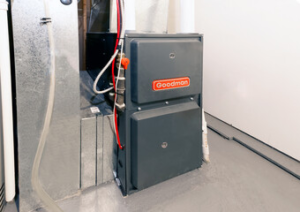Furnace Installation Los Angeles is a complex process that requires careful attention to detail. This includes making the right connections to the ventilation system and gas line.
Proper connection can mean better airflow and less energy wasted. Incorrect connections, however, can lead to poor performance. A good install team will run a series of safety checks before and during installation.

Before the furnace is installed, it is important to clear out any objects or combustible materials in the area. This will help contractors work safely and avoid tripping or falling over items during the process. It is also wise to make sure that the area is well insulated and ventilated to reduce the risk of fire or other damage to your home.
It is also a good idea to make a supply list and have the necessary tools to complete the project. Typically, the instruction manual will include a list of essential items such as tin snips, sheet metal screws, wire strippers, cable ties and a cordless screwdriver with a 1/4″ hex bit. Additional supplies may be needed depending on the specific furnace and the installation location, but a general list should cover most projects.
Another key step is evaluating the existing ductwork for proper sizing and insulation. This will ensure that the new system is working as efficiently as possible and not wasting energy due to improper sizing or air leaks. Often, this can be done for free by a local heating contractor.
In addition to evaluating the ductwork, you should have your furnace sized correctly based on the square footage of your house and the number of people living in it. This will help prevent over- or undersized equipment, which can cause poor performance and a host of problems, including high utility bills, carbon monoxide buildup, and sudden breakdowns.
Lastly, you should have the new furnace connected to the gas line and electrical outlet. This is where most of the initial testing will take place; the installers will make sure that everything works properly and are safe before firing up your new system for the first time.
Furnaces are complex pieces of machinery that require expert installation to work properly. While it is tempting to save money by taking on the project yourself, you should know that a simple mistake could result in irreparable damage to your heating system. Ultimately, it is usually worth the extra cost to hire professional contractors to do the job right.
Furnaces are complex pieces of equipment that require specialized knowledge and tools to install properly. When you hire an experienced professional, they’ll be able to get the job done quickly and efficiently. They’ll also know which permits to obtain and how to install everything so that it meets local building codes.
The first step is to prepare the installation site. This includes clearing the area and removing any combustible materials in the vicinity. It’s also important to ensure that there is enough space to accommodate the furnace. It should be placed at least three feet away from any obstructions that could prevent air flow and ensure adequate ventilation.
Once the site is prepared, the HVAC team will begin assembling the furnace. They’ll connect the necessary electrical and gas lines, and ensure that it’s properly positioned and sized. They’ll also evaluate existing ductwork and make any needed repairs or improvements to improve the efficiency of the system.
After the furnace is assembled, they’ll begin connecting the venting pipes. The PVC pipes will be connected to the inlet and exhaust ports on the furnace. It’s important to use proper pipe fittings to ensure that the connections are secure and water is able to drain. The venting pipes should also be installed on a slight slope to allow the condensation to drain from the bottom of the furnace.
Another important part of furnace installation is installing a carbon monoxide detector. Carbon monoxide is a deadly gas that can be released from malfunctioning furnaces. A carbon monoxide detector will be able to detect this dangerous gas and alert homeowners so that they can take action before it’s too late.
Once the installation process is complete, a Logan Services technician will go over a quality assurance checklist to ensure that all of the steps have been completed correctly. They will then walk you through how to operate and care for your new furnace, and answer any questions that you may have. Regular maintenance and inspections will help your new furnace last longer and keep it running at peak performance.
Permits
Depending on the specific requirements of your area, it may be necessary to obtain a permit for furnace replacement. This will ensure that your HVAC project is up to code and meets all safety standards. Permits typically involve submitting specific documentation and paying associated fees. The process may take a few days to a few weeks, so it’s important to plan ahead and get the permits you need before beginning your work.
It’s essential to hire an experienced and licensed contractor for your HVAC replacement project. They will understand the permit acquisition process and will ensure that all work is performed in compliance with local inspection regulations. In addition, a reputable HVAC contractor will prioritize adherence to building codes and will ensure that your furnace is installed safely and efficiently.
A furnace stack is a vertical pipe that disperses flue gasses from the burners of your home’s furnace. These gases are comprised of carbon dioxide, water vapor, and other airborne pollutants. Because of environmental concerns, they are regulated by the state and must be released in a controlled manner. During the replacement process, you must properly vent your furnace and ensure that the stack is properly sealed to prevent harmful emissions from being released into the environment.
Failure to secure a permit for your furnace replacement can result in fines and penalties. Additionally, your insurance company may refuse to cover the costs of any damage or injuries that result from unpermitted work.
In some cases, the city will shut down your project or require you to tear down any unpermitted work. The penalties for failing to obtain a permit for your HVAC project vary from state to state, but they are typically quite high.
The permit application process may seem tedious and time-consuming, but it’s worth it to ensure that your installation is up to code and safe for you and your family. It’s also a great way to protect yourself from any future legal issues that could arise from unauthorized work. And in the long run, a permit can help you save money on your utility bills because your new furnace will be more energy efficient than if it were improperly installed.
Safety
When it comes to furnace installation, safety is a top priority. Many problems that homeowners encounter with their new furnaces are caused by improper installation practices. To help prevent such issues, there are some simple precautions that you can take before your technician arrives.
First, make sure that the room in which your furnace is located is clear of flammable items and clutter. This includes removing any rags, papers, paints and other combustible items. Also, keep the area around your furnace free of debris like leaves, twigs and dust, as these objects can block air vents. This can cause your furnace to overheat and damage the blower motor.
It is also a good idea to have a fire extinguisher handy in case of an emergency, and make sure that everyone in your household knows where it is. Also, if your furnace is gas-powered, make sure that all members of your family know how to shut off the gas valve in the event of a leak. This is important because a gas leak can be deadly.
In addition, it is a good idea to have a carbon monoxide detector in your home and install it near your furnace. Carbon monoxide detectors will warn you of a CO leak before it becomes an emergency, which can save lives. Additionally, you should test your smoke and carbon monoxide detectors regularly to ensure that they are working properly.
Lastly, it is a good idea to install surge protectors in your home to protect your furnace and other appliances from power spikes that can damage them. These devices can be purchased at most hardware stores and are relatively inexpensive.
Finally, it is a good idea to get your ductwork assessed for proper size and orientation before having your furnace installed. Having misaligned ducts can result in 10-30% higher energy bills and reduced efficiency. It can also increase wear and tear on your system, which will lead to expensive repairs in the future. Having your ducts assessed before the installation process will allow your HVAC professional to inform you of any alterations that may need to be made.

